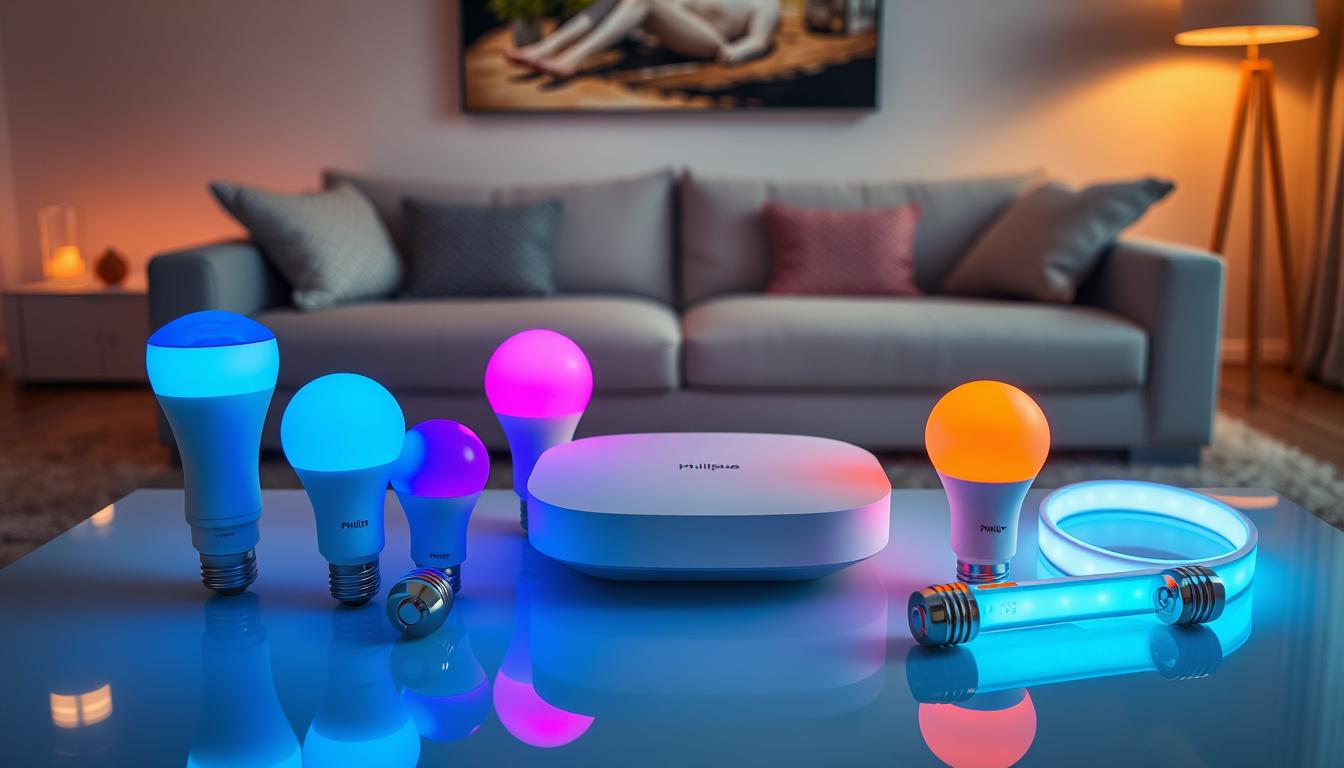Smart lighting has evolved dramatically in 2025, transforming from simple remote-controlled bulbs to sophisticated systems that integrate seamlessly with our daily lives. Today’s smart lighting offers unprecedented customization, energy efficiency, and integration capabilities with other smart home devices. Whether you’re looking to enhance your home’s ambiance, improve security, or simply enjoy the convenience of voice-controlled lighting, the latest systems offer innovative features that were once the stuff of science fiction.
Table of Contents
ToggleIn this comprehensive guide, we’ve tested and reviewed the top 10 best smart lighting systems in 2025, evaluating them on brightness, color quality, ease of setup, app functionality, ecosystem compatibility, and overall value. From budget-friendly options to premium setups, we’ve got recommendations for every home and need. Let’s illuminate your path to the perfect smart lighting solution.
Comparing the Top 10 Best Smart Lighting Systems in 2025
| Product Name | Compatibility | Features | Specifications | Price | Rating |
| Philips Hue Ecosystem | Alexa, Google, Apple HomeKit, Matter | Voice control, scheduling, 16M colors, scenes, entertainment sync | 800-1100 lumens, 9.5W, 25,000 hours | $199.99 (starter kit) | ★★★★★ (5.0) |
| Nanoleaf Shapes | Alexa, Google, Apple HomeKit, Matter | Modular design, touch control, music sync, screen mirroring | 100 lumens per panel, 2W per panel, 25,000 hours | $179.99 (starter kit) | ★★★★☆ (4.7) |
| LIFX Smart Lighting | Alexa, Google, Apple HomeKit, Matter | No hub required, 16M colors, scheduling, scenes | 1100 lumens, 11W, 22,500 hours | $149.99 (starter kit) | ★★★★☆ (4.5) |
| Govee RGBIC Pro | Alexa, Google, Matter | DreamView sync, music reactive, AI-powered scenes | 1500 lumens, 12W, 50,000 hours | $129.99 (starter kit) | ★★★★☆ (4.4) |
| TP-Link Tapo Smart Lighting | Alexa, Google, Matter | No hub required, scheduling, away mode, energy monitoring | 1100 lumens, 8.7W, 22,000 hours | $79.99 (starter kit) | ★★★★☆ (4.3) |
| Wyze Color Bulb Pro | Alexa, Google | Budget-friendly, scheduling, vacation mode | 1100 lumens, 9W, 20,000 hours | $59.99 (4-pack) | ★★★★☆ (4.2) |
| Lutron Caseta | Alexa, Google, Apple HomeKit | Switch-based, reliable, geofencing, scheduling | Works with existing bulbs, 600W capacity | $99.99 (starter kit) | ★★★★☆ (4.1) |
| Sengled Smart LED | Alexa, Google, Matter | Energy monitoring, scheduling, groups | 800 lumens, 8W, 22,000 hours | $49.99 (4-pack) | ★★★★☆ (4.0) |
| Wiz Connected | Alexa, Google, Apple HomeKit, Matter | SpaceSense motion detection, vacation mode, circadian rhythm | 800 lumens, 8W, 25,000 hours | $44.99 (4-pack) | ★★★★☆ (3.9) |
| GE Cync Dynamic Effects | Alexa, Google | Multi-color segments, music sync, scheduling | 760 lumens, 9W, 15,000 hours | $39.99 (2-pack) | ★★★☆☆ (3.8) |
1. Philips Hue Ecosystem
Pros
- Unmatched ecosystem with the widest range of lighting products
- Superior color accuracy and brightness consistency
- Robust app with intuitive controls and extensive features
- Matter compatibility ensures future-proof integration
- Entertainment features like Sync Box for immersive experiences
Cons
- Premium pricing compared to competitors
- Requires Hue Bridge for full functionality
- Initial setup can be complex for beginners
Philips Hue continues to dominate the smart lighting market in 2025 with its comprehensive ecosystem. The latest generation offers improved brightness (up to 1100 lumens), enhanced color accuracy, and expanded Matter compatibility. The Hue app remains the gold standard, providing intuitive controls for scenes, routines, and entertainment features.
What truly sets Philips Hue apart is its vast product range – from standard A19 bulbs to light strips, outdoor fixtures, and specialty lighting. The Hue Entertainment features, including the Sync Box, create immersive lighting experiences that sync with your music, movies, and games. While the system requires a Hue Bridge for full functionality, the investment pays off with rock-solid reliability and the most extensive third-party integrations.
For those willing to invest in a premium system that will grow with their needs, Philips Hue remains the definitive choice in 2025, earning our Editor’s Choice award.
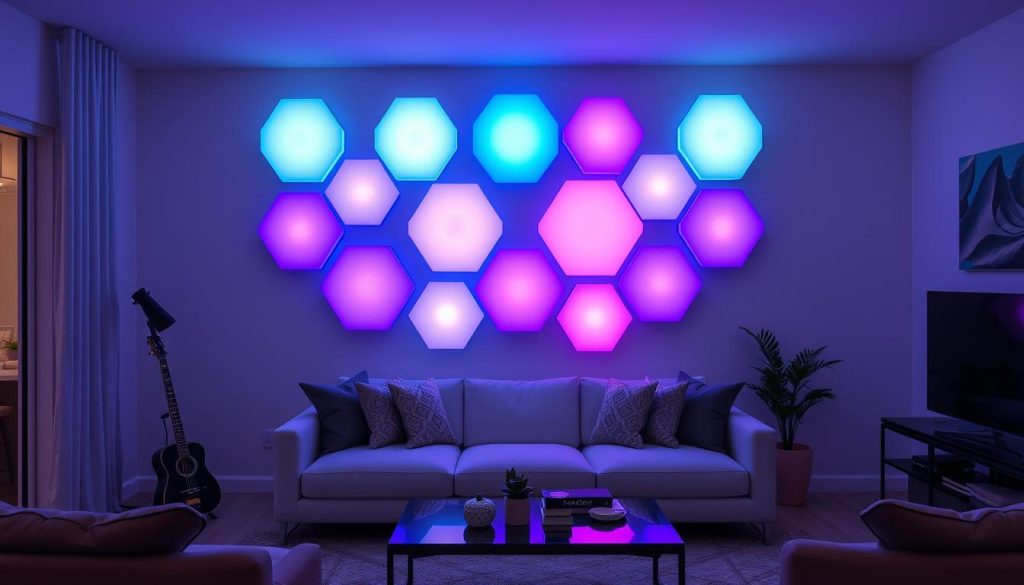
2. Nanoleaf Shapes
Pros
- Stunning modular design with mix-and-match shapes
- Touch-sensitive panels with interactive features
- Excellent screen mirroring and music sync capabilities
- Matter and Thread support for future-proof connectivity
- No hub required for basic functionality
Cons
- Higher price point per square foot of lighting
- Installation can be challenging for complex designs
- Occasional connectivity issues with larger installations
Nanoleaf Shapes represents the pinnacle of decorative smart lighting in 2025. The modular panels – available in hexagons, triangles, and squares – can be arranged in limitless configurations to create stunning wall art that doubles as functional lighting. The latest generation features improved brightness per panel (100 lumens) and enhanced touch sensitivity for interactive experiences.
The Nanoleaf app offers an extensive library of user-created scenes, plus excellent integration with music and screen content. The 2025 models include Thread border router functionality, strengthening your smart home network while providing reliable control. Touch actions can trigger other smart home devices, making your lighting both beautiful and functional.
While primarily decorative, Nanoleaf Shapes provides enough illumination for ambient lighting in most rooms. For those seeking a conversation-starting lighting solution that blends technology with art, Nanoleaf Shapes delivers a premium experience worth the investment.
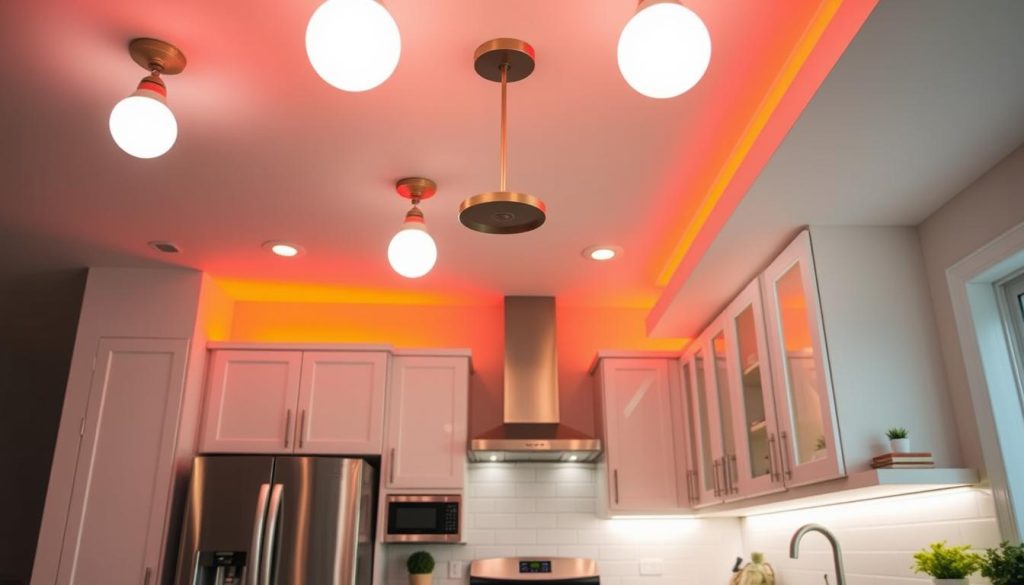
3. LIFX Smart Lighting
Pros
- Exceptional brightness (1100+ lumens) and color saturation
- No hub required for operation
- Multi-zone light strips with independent color control
- Matter compatibility for wide ecosystem integration
- Excellent energy efficiency for brightness output
Cons
- Higher per-bulb cost than many competitors
- App can be less intuitive than alternatives
- Fewer product options than Philips Hue
LIFX continues to impress in 2025 with its hub-free smart lighting system that delivers exceptional brightness and color quality. The standout feature remains the industry-leading brightness – with standard A19 bulbs outputting 1100 lumens and the LIFX Clean offering antimicrobial capabilities alongside brilliant illumination.
The LIFX Z light strips remain unmatched in the multi-zone category, allowing for multiple colors on a single strip – perfect for entertainment centers and architectural highlighting. The 2025 lineup includes improved Matter integration, ensuring seamless connectivity with all major smart home platforms.
While the app experience isn’t quite as polished as Philips Hue, LIFX compensates with superior brightness and the convenience of direct Wi-Fi connectivity without requiring a hub. For those seeking maximum illumination and vivid colors without the complexity of a bridge-based system, LIFX delivers exceptional performance.

4. Govee RGBIC Pro
Pros
- Exceptional value for feature-rich lighting
- Industry-leading entertainment sync capabilities
- AI-powered scene recognition for dynamic lighting
- Wide product range from bulbs to outdoor lighting
- No hub required for operation
Cons
- App can be overwhelming with too many features
- Less reliable than hub-based systems
- Limited HomeKit support
Govee has rapidly evolved from budget lighting brand to innovation leader, and the 2025 RGBIC Pro lineup showcases this transformation. The system excels in entertainment applications, with the DreamView technology creating immersive lighting experiences that respond to on-screen content without requiring external hardware like the Hue Sync Box.
The 2025 models introduce AI-powered scene recognition that automatically adjusts lighting based on content type – brightening during action sequences and softening during dialogue. The Matter-compatible ecosystem now includes everything from standard bulbs to outdoor fixtures, light strips, and innovative floor lamps with segment control.
While the app offers extensive customization, it can feel cluttered compared to more streamlined competitors. However, for those seeking entertainment-focused lighting at a reasonable price point, Govee delivers exceptional value and innovative features that rival systems costing twice as much.
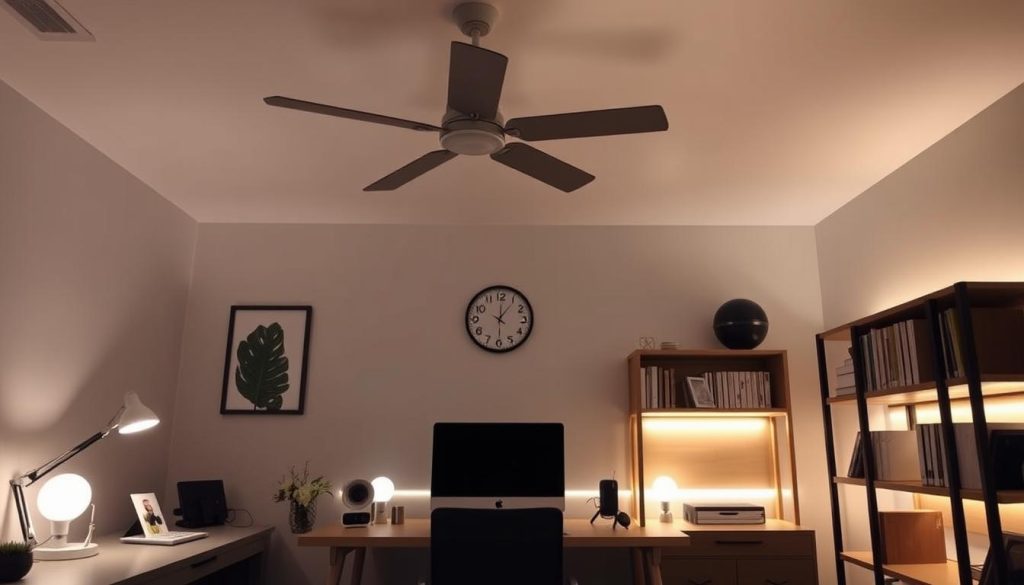
5. TP-Link Tapo Smart Lighting
Pros
- Excellent value with competitive pricing
- No hub required for operation
- Reliable Wi-Fi connectivity
- Matter compatibility for wide ecosystem integration
- Energy monitoring features
Cons
- Limited advanced entertainment features
- Fewer specialty lighting options
- App interface could be more intuitive
TP-Link’s Tapo smart lighting system offers an impressive balance of affordability, reliability, and features in 2025. The hub-free system connects directly to your Wi-Fi network, with Matter compatibility ensuring seamless integration with all major smart home platforms. The L535E multicolor bulb delivers 1100 lumens of brightness with 16 million colors, rivaling premium brands at a fraction of the cost.
The Tapo app provides all essential features – schedules, scenes, energy monitoring, and away mode – in a straightforward interface. The 2025 lineup expands with new light strips featuring segment control and outdoor lighting options with weather resistance. Integration with other TP-Link smart home products creates a cohesive ecosystem without requiring multiple apps.
While lacking some of the advanced entertainment features found in premium systems, TP-Link Tapo delivers exceptional value for everyday smart lighting needs. For budget-conscious consumers seeking reliable performance and Matter compatibility, Tapo represents one of the best values in smart lighting.
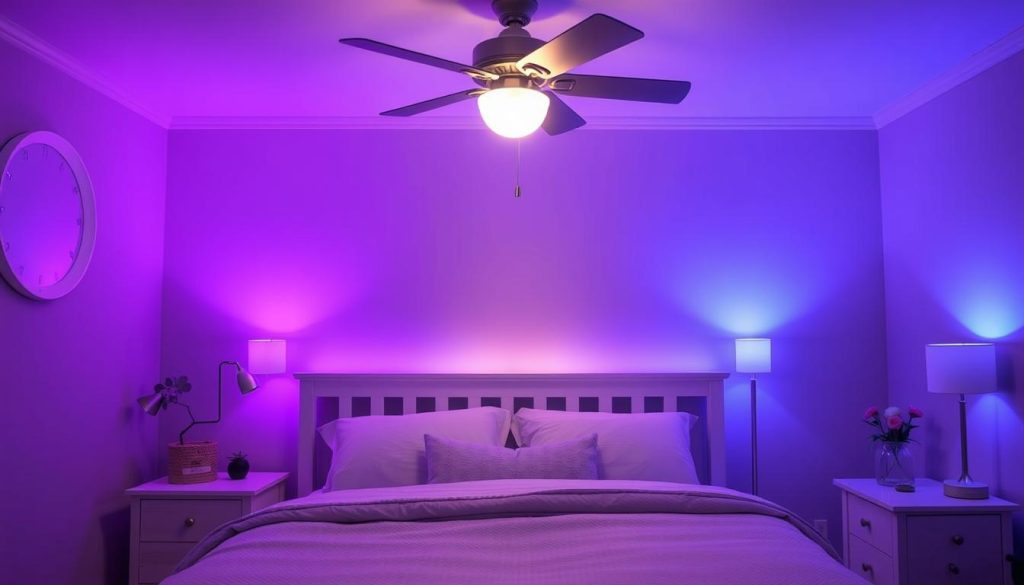
6. Wyze Color Bulb Pro
Pros
- Exceptional value with lowest cost per bulb
- No hub required for operation
- Good brightness (1100 lumens) for the price
- Integrates with other Wyze smart home products
- Simple, straightforward app interface
Cons
- Limited Matter support
- Fewer advanced features than premium options
- Limited product range beyond standard bulbs
Wyze continues to dominate the budget smart lighting category in 2025 with its Color Bulb Pro lineup. These hub-free bulbs connect directly to Wi-Fi and deliver impressive performance at an unbeatable price point. The latest generation offers 1100 lumens of brightness, 16 million colors, and improved connectivity reliability over previous models.
The Wyze app provides a straightforward user experience with all essential features – schedules, scenes, vacation mode, and group control. While lacking some advanced features found in premium systems, the app integrates seamlessly with other Wyze smart home products like cameras and sensors, creating affordable automation possibilities.
The 2025 lineup expands with new light strips and outdoor lighting options, though the selection remains more limited than premium brands. For budget-conscious consumers seeking to outfit an entire home with smart lighting without breaking the bank, Wyze Color Bulb Pro delivers exceptional value and solid performance.

7. Lutron Caseta
Pros
- Unmatched reliability with Clear Connect RF technology
- Works with existing bulbs – no special bulbs required
- Physical remote controls included
- No neutral wire required for most installations
- Compatible with all major smart home platforms
Cons
- Higher initial investment than bulb-based systems
- Requires Lutron Smart Bridge hub
- No color-changing capabilities
Lutron Caseta takes a different approach to smart lighting, focusing on switches and dimmers rather than bulbs. This system replaces your existing wall switches, allowing you to control your current lighting fixtures while adding smart capabilities. The 2025 lineup introduces enhanced Matter compatibility while maintaining the rock-solid reliability that has made Caseta the professional’s choice for smart lighting.
The proprietary Clear Connect RF technology operates on a different frequency than Wi-Fi and Bluetooth, resulting in exceptional reliability even in homes with challenging wireless environments. The included Pico remotes provide convenient physical control options beyond app and voice commands – perfect for guests and family members who prefer traditional controls.
While lacking the color-changing capabilities of bulb-based systems, Caseta excels in practical everyday lighting control. For homeowners seeking a reliable, professionally-installed smart lighting solution that works with existing fixtures, Lutron Caseta remains the gold standard in 2025.
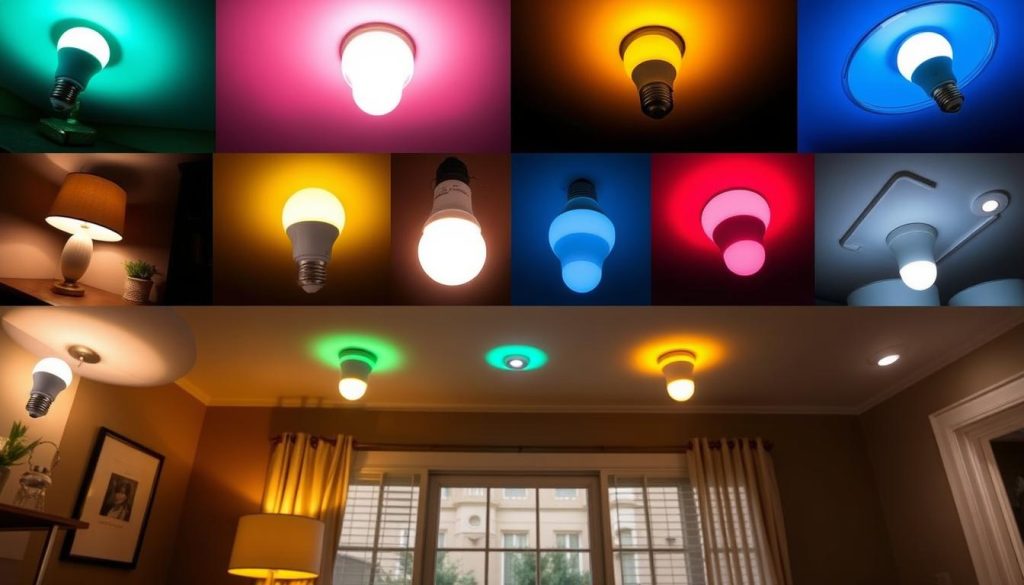
8. Sengled Smart LED
Pros
- Excellent value with competitive pricing
- Energy monitoring capabilities
- Dual connectivity options (Wi-Fi and Zigbee)
- Matter compatibility for wide ecosystem integration
- Good product range including specialty bulbs
Cons
- App experience less polished than competitors
- Slightly lower brightness than premium options
- Limited advanced features
Sengled offers a compelling balance of affordability and features in its 2025 Smart LED lineup. The system provides dual connectivity options – direct Wi-Fi connection for simple setups or Zigbee for more reliable mesh networking with a compatible hub. The latest generation adds Matter compatibility, ensuring seamless integration with all major smart home platforms.
A standout feature is the built-in energy monitoring, which tracks consumption and provides insights to help reduce electricity usage. The 2025 lineup expands with specialty bulbs including BR30 floodlights, candelabra bulbs, and outdoor-rated options, providing solutions for most lighting needs at budget-friendly prices.
While the app experience lacks some refinement compared to premium brands, it provides all essential functionality including schedules, scenes, and groups. For budget-conscious consumers seeking reliable performance with energy monitoring capabilities, Sengled Smart LED delivers excellent value in 2025.
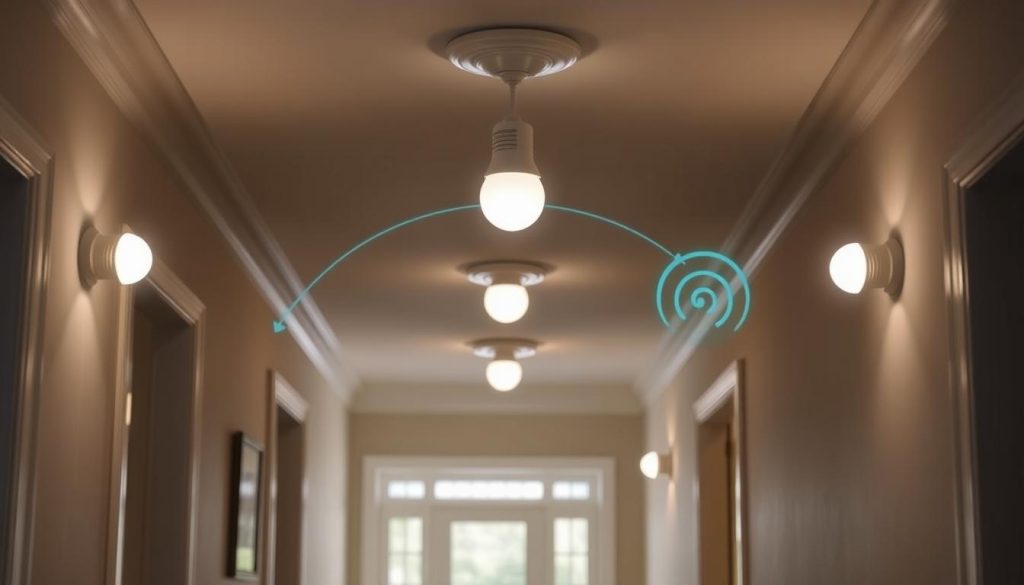
9. Wiz Connected
Pros
- Innovative SpaceSense motion detection without sensors
- Excellent value with competitive pricing
- No hub required for operation
- Matter compatibility for wide ecosystem integration
- Circadian rhythm lighting features
Cons
- Occasional connectivity issues
- SpaceSense feature can be inconsistent
- Limited product range compared to premium brands
Wiz Connected, owned by Signify (the same company behind Philips Hue), offers an innovative approach to smart lighting with its SpaceSense technology. This unique feature uses Wi-Fi signals to detect motion without requiring separate motion sensors – the bulbs themselves can detect when someone enters a room and trigger lighting automations accordingly.
The 2025 lineup enhances this capability with improved accuracy and range, while adding Matter compatibility for seamless integration with all major smart home platforms. The Wiz app provides a good selection of features including circadian rhythm lighting that automatically adjusts color temperature throughout the day to support healthy sleep patterns.
While the SpaceSense feature can be somewhat inconsistent in larger spaces, it works well in smaller rooms and provides unique functionality not found in other systems. For those seeking innovative features at a budget-friendly price point, Wiz Connected offers a compelling package in 2025.
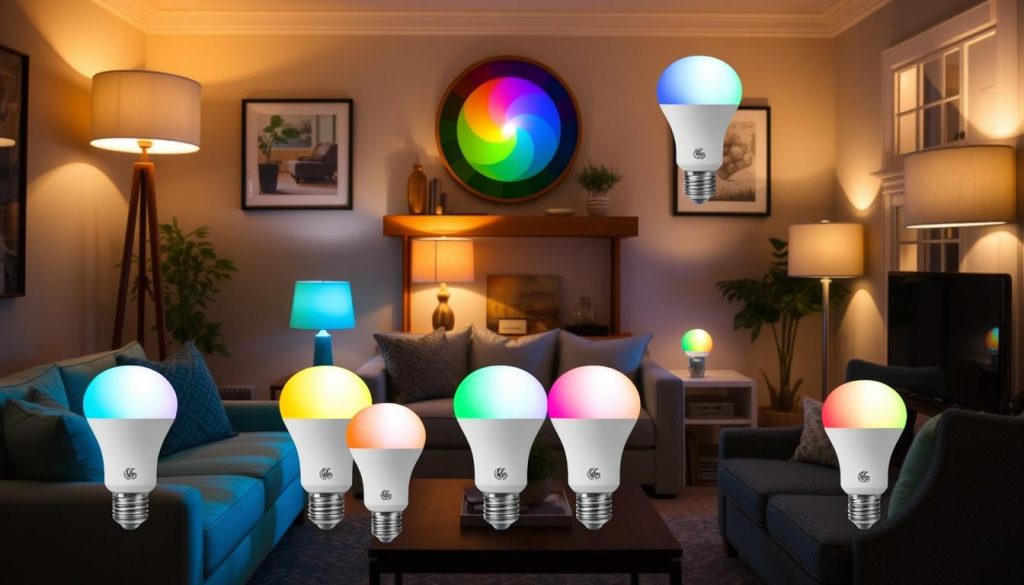
10. GE Cync Dynamic Effects
Pros
- Unique multi-segment color control in single bulb
- Excellent entertainment and decorative capabilities
- No hub required for operation
- Good integration with Google Assistant and Alexa
- Expanding product range with innovative designs
Cons
- Limited Matter support
- App can be challenging to navigate
- No Apple HomeKit compatibility
GE Cync Dynamic Effects stands out in the 2025 smart lighting landscape with its unique multi-segment color control. Unlike conventional smart bulbs that display a single color at a time, these innovative LEDs can display up to four different colors simultaneously in distinct segments – creating striking visual effects impossible with other systems.
The 2025 lineup expands this capability with improved color blending and new animation options that create dynamic lighting experiences. The music sync feature has been enhanced with better beat detection and customizable responses, making these bulbs perfect for entertainment spaces and parties.
While the app experience has room for improvement and ecosystem support is more limited than Matter-compatible alternatives, the unique multi-color capabilities make GE Cync Dynamic Effects worth considering for those seeking distinctive decorative lighting. For entertainment spaces, game rooms, or anywhere you want to make a visual impact, these innovative bulbs deliver effects no other system can match.
Smart Lighting Systems Buyer’s Guide for 2025
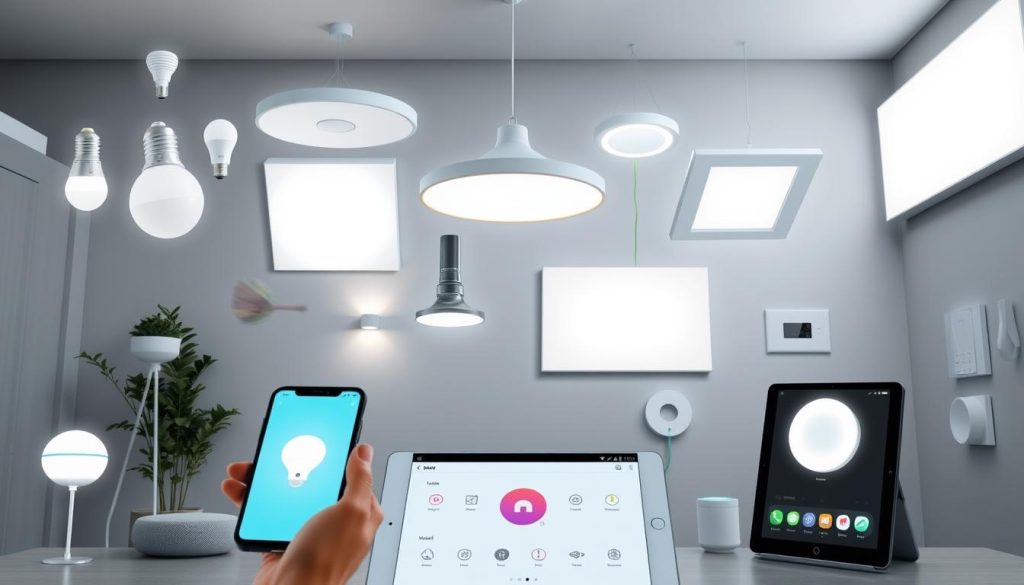
Key Factors to Consider When Choosing Smart Lighting
Connectivity Options
Modern smart lighting systems connect via Wi-Fi, Bluetooth, Zigbee, Thread, or Matter. Wi-Fi bulbs offer direct router connection without a hub but may strain networks with many devices. Zigbee and Thread create reliable mesh networks but require a compatible hub. Matter compatibility ensures interoperability across ecosystems, making it increasingly important in 2025.
Hub Requirements
Some systems like Philips Hue work best with a dedicated hub, while others connect directly to Wi-Fi. Hub-based systems typically offer better reliability and lower latency, while hub-free options provide simpler setup and lower initial cost. Consider your priorities when choosing between these approaches.
Ecosystem Compatibility
Ensure your chosen lighting system works with your preferred smart home platform (Amazon Alexa, Google Home, Apple HomeKit). Matter-compatible devices work with all major platforms, providing maximum flexibility as your smart home evolves.
Brightness and Color Quality
For primary lighting, look for bulbs with at least 800 lumens. Premium options now reach 1100+ lumens. Color quality varies significantly between brands – budget options may display washed-out colors, while premium systems offer vibrant, accurate hues across the spectrum.
Special Features
Consider which special features matter most to you: entertainment sync for immersive experiences, circadian rhythm support for wellness, energy monitoring for efficiency, or motion sensing for convenience. Different systems excel in different areas.
Expandability
Consider your long-term lighting needs. Some ecosystems offer extensive product ranges including specialty bulbs, outdoor lighting, and decorative options. Others focus primarily on standard A19 bulbs. Choose a system that can grow with your needs.
Final Thoughts on the Best Smart Lighting Systems in 2025

The smart lighting landscape in 2025 offers more choices and capabilities than ever before. Matter compatibility has simplified ecosystem integration, while innovations in entertainment features, motion sensing, and energy efficiency continue to enhance the value proposition of smart lighting.
For those seeking the most comprehensive ecosystem with unmatched reliability, Philips Hue remains the gold standard despite its premium pricing. Budget-conscious consumers can find excellent value in systems like TP-Link Tapo and Wyze, which deliver impressive performance at significantly lower price points. Those seeking unique decorative options should explore Nanoleaf’s modular panels or GE Cync’s multi-segment bulbs.
When selecting a smart lighting system, consider your specific needs, budget, and existing smart home ecosystem. The best choice ultimately depends on your priorities – whether that’s maximum brightness, color quality, reliability, unique features, or value. With the options presented in this guide, you can confidently illuminate your home with the perfect smart lighting system for your needs in 2025.
Ready to Upgrade Your Home Lighting?
Transform your living space with our Editor’s Choice: the Philips Hue Ecosystem. Experience unmatched color quality, reliability, and the most comprehensive smart lighting ecosystem available in 2025.
Frequently Asked Questions About Smart Lighting Systems
Do smart bulbs work with regular light switches?
Yes, smart bulbs work with regular switches, but turning off the switch cuts power to the bulb, preventing remote control until the switch is turned back on. For the best experience, either keep switches always on and control lights via app/voice, or install smart switches instead. Some systems like Lutron Aurora offer solutions that prevent switches from being turned off accidentally.
What is Matter and why is it important for smart lighting?
Matter is a new connectivity standard that ensures smart home devices work seamlessly across ecosystems. Matter-compatible lighting can be controlled by Amazon Alexa, Google Home, Apple HomeKit, and Samsung SmartThings without requiring multiple setups or bridges. In 2025, Matter support has become increasingly important as it eliminates ecosystem lock-in and simplifies the smart home experience.
How much energy do smart bulbs use when “off”?
Smart bulbs typically consume 0.2-0.5 watts when “off” but still connected to your network. This standby power allows them to receive commands to turn back on. While minimal, this consumption adds up with multiple bulbs. Most 2025 models have improved efficiency, with annual standby costs around $0.50-$1.00 per bulb depending on your electricity rates.
Can smart lighting save money on energy bills?
Yes, despite the standby power consumption, smart lighting typically reduces overall energy usage through dimming capabilities, efficient scheduling, occupancy-based control, and the inherent efficiency of LED technology. Many 2025 systems include energy monitoring features that help identify opportunities for further savings. The convenience of automation also reduces instances of lights being left on unnecessarily.
What’s the difference between RGB and RGBWW bulbs?
RGB bulbs create colors by mixing red, green, and blue LEDs, which can produce millions of colors but often struggle with quality whites. RGBWW (Red, Green, Blue, Warm White, Cool White) bulbs add dedicated white LEDs at different color temperatures, resulting in superior white light quality and more accurate colors. Most premium smart bulbs in 2025 use RGBWW technology for better overall lighting performance.


